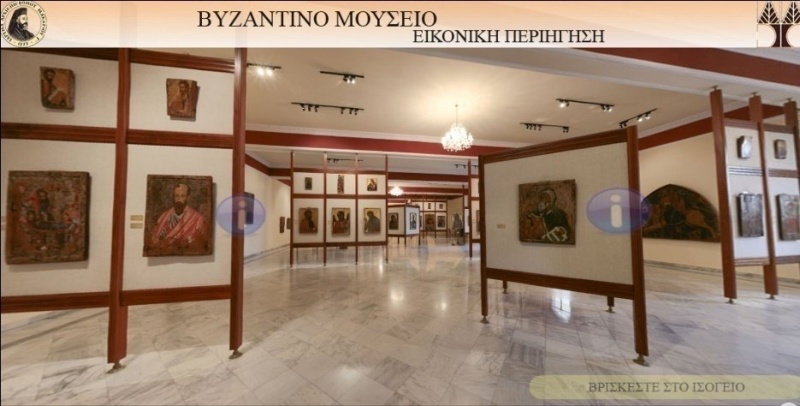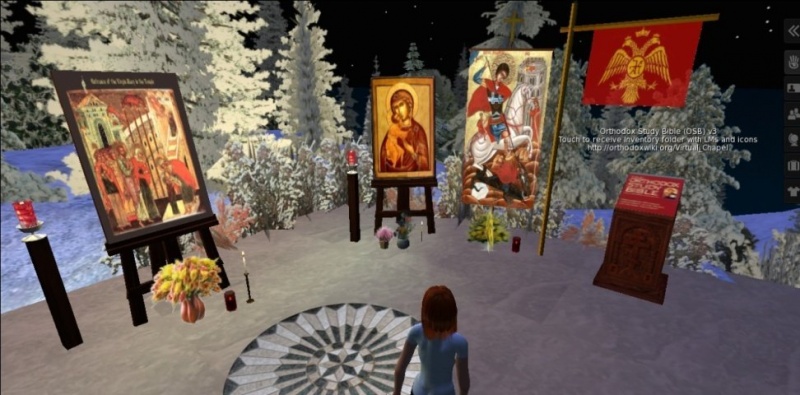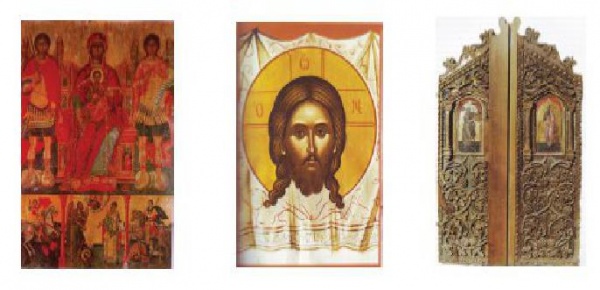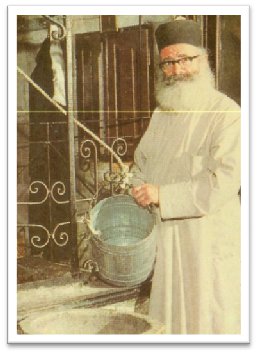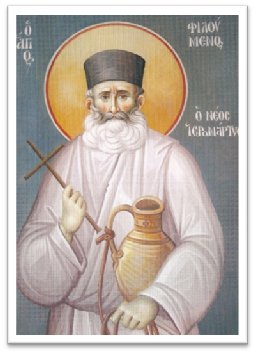Überleitung (CP)
Ikonen im Cyberspace
Voutounos Chrysanthos hat auf der Cyberspace 2010 in Brünn das Projekt eines digitalen Museums byzantinischer Ikonen vorgestellt. Hier einige Anregungen daraus.
- "The current trends for the dissemination of Byzantine art raise questions for its transformed existence, the representation of its visual language and the description of its “entities” within the domain of cyberspace . A dissemination in the world wide web (the space of innumerable interconnected spaces) forms a post - modern ontological state of a mystical art visualized in cyberspace."
- "Byzantine art matured in the spirit of the first united Christian church adapting the spiritual needs of pilgrims."
- "It expresses the doctrines of the Eastern Orthodox church."
- "While historical reality is the most important question for church Byzantine art aesthetics express perfect symbols (or rather perfect icons)that exceed the borders of time in process of transcendental apocalypse."
Zwei Bilder verschiedener Technik und Funktion, ein Foto und eine Ikone. Ein Heiliger soll dargestellt werden, nach byzantinischer Tradition in eine Darstellungskonvention transfiguriert. Die Darstellungswelt ist aus dem Museum bekannt. Hier tritt sie in Interferenz mit zeitgenössischer Wahrnehmung.
Ein Foto verbürgt Realität, es dokumentiert die Körperlichkeit des Sujets. Es ist irdisch, unübertreffbar korrekt. Aber es geht nicht um korrekte Darstellung. Der Heilige war ein Mensch, aber das ist kein Familienalbum. Der Zweck der Abbildung ist eine Transzendenz. Die Pointe dieser Ikone ist, dass diese Transzendenz durch die Schematisierung einer Fotographie erreicht wird. Man möchte sagen durch den Rückschritt auf veraltete Darstellungsmittel. (Vgl. die Interieurs des 19. Jahrhunderts in "Blade Runner" und "Matrix".)
Welche Mittel stehen zur Visualisierung des Ausserordentlichen zur Verfügung? Eine Strategie: Entzeitlichung, Abstraktion, Statik. Die Anfertigung einer Form.
Hier eine Zeichenkette: 2,4,6,8,10,12,14,16. Gibt es Gemeinsamkeiten? Was fällt Dir auf? ==> "2n+2". Das ist "die Form dahinter".
Voutounos Chrysanthos: Siehe Plato
These digital replicas represent Holy beings and Holy themes as in the case of traditional artifacts representations like corporeal portable icons, murals, mosaics ...
An ontology relative to the Platonic realism (Idees, forms)
- Its about the religious dimension of Plato’s thought and more specifically the theory of eidos, idees (ideas or forms)
- not only about the outward appearance - in the manner of perceptible presence (Heidegger, Being and Time)
- Ideas of pure conception for the human reason, attributes of the Divine Reason.
Intellectual expression for Christian Theology
- Contradictions of Plato philosophy (who created the ideas?, uncreated, or by God? In contemplation of ideas and souls kinship with God a flight from this world makes a soul divine (Theaetetus , 176 B)
- The ascent of man - Neo-Platonism
- In self knowledge the soul realizes the divine within itself
- the drama of the individual soul than on the structures of a liturgical society (ex. St Augustine, Kierkegaard)
- Deleuze’s ontology of the virtual, an existential practice for mystical experience
- Intellectual expression for the Patristic Theology
- The detachment from false reality through a process of paideia, or education, or correction, training of the soul. Noesis is a deeper, simpler, more contemplative form of thought
- The liturgical symbolism and a hierarchy (Dionysios) fulfills a cosmic and communal role structuring the community of the church (ecclesia) denoting a liturgical reality
